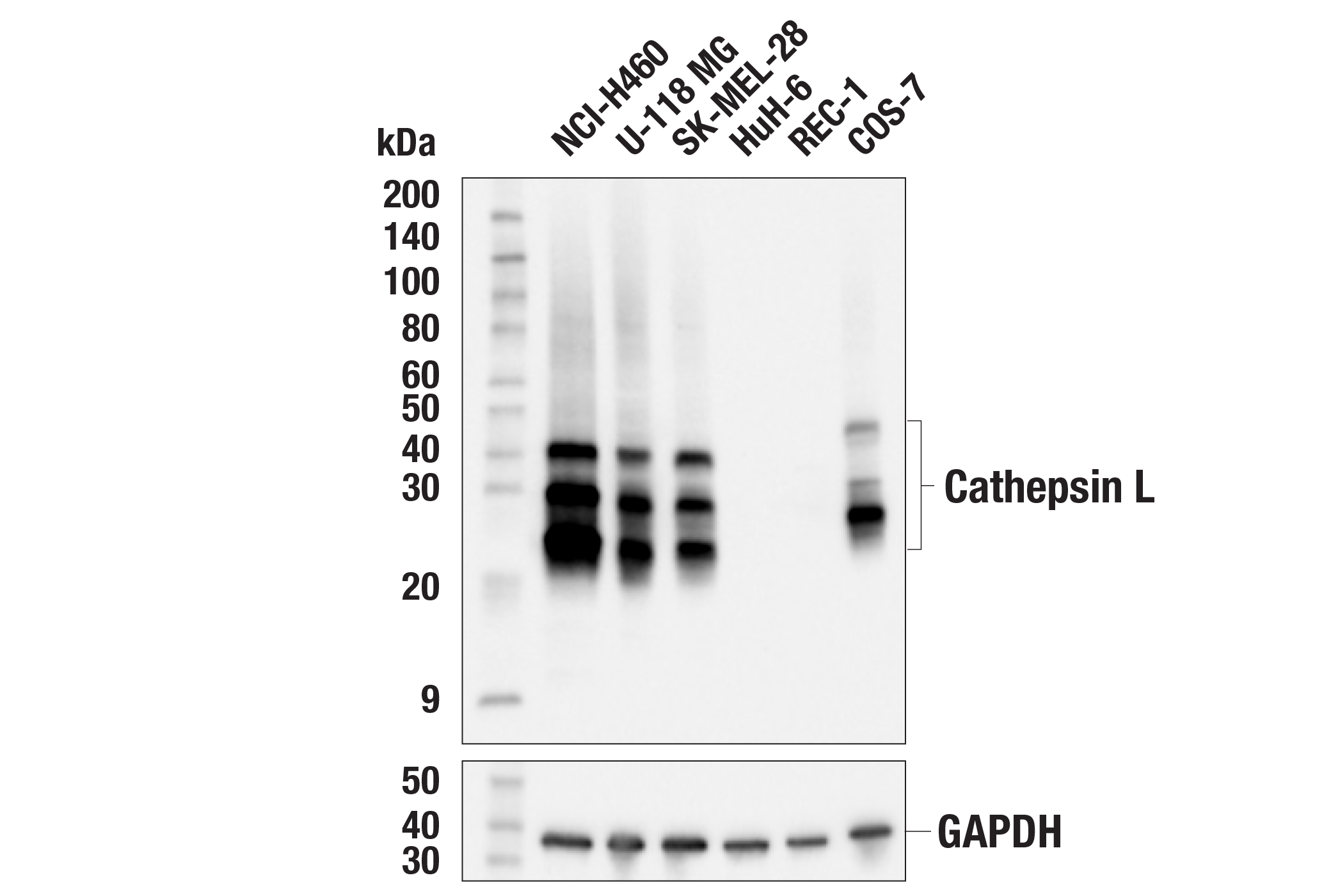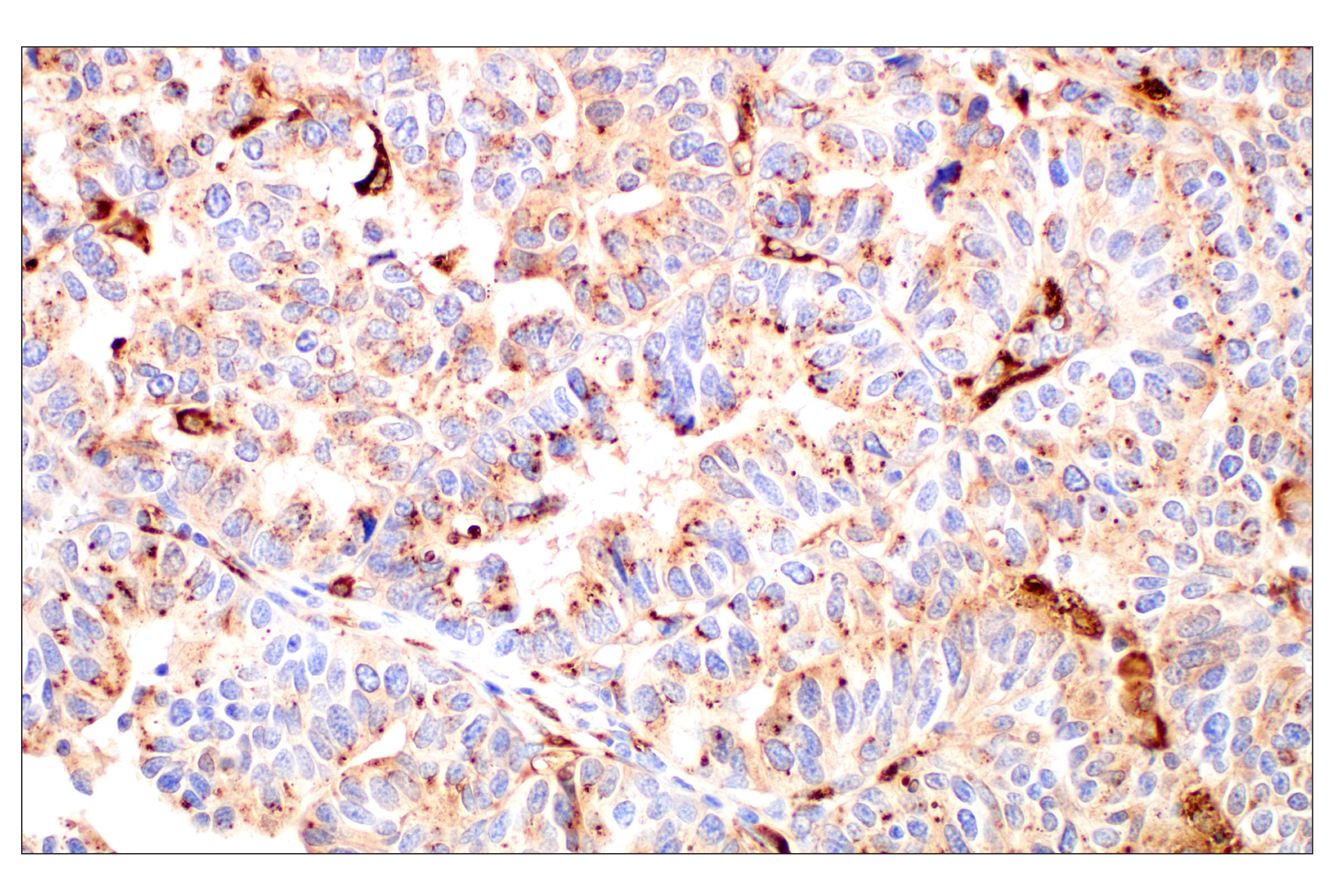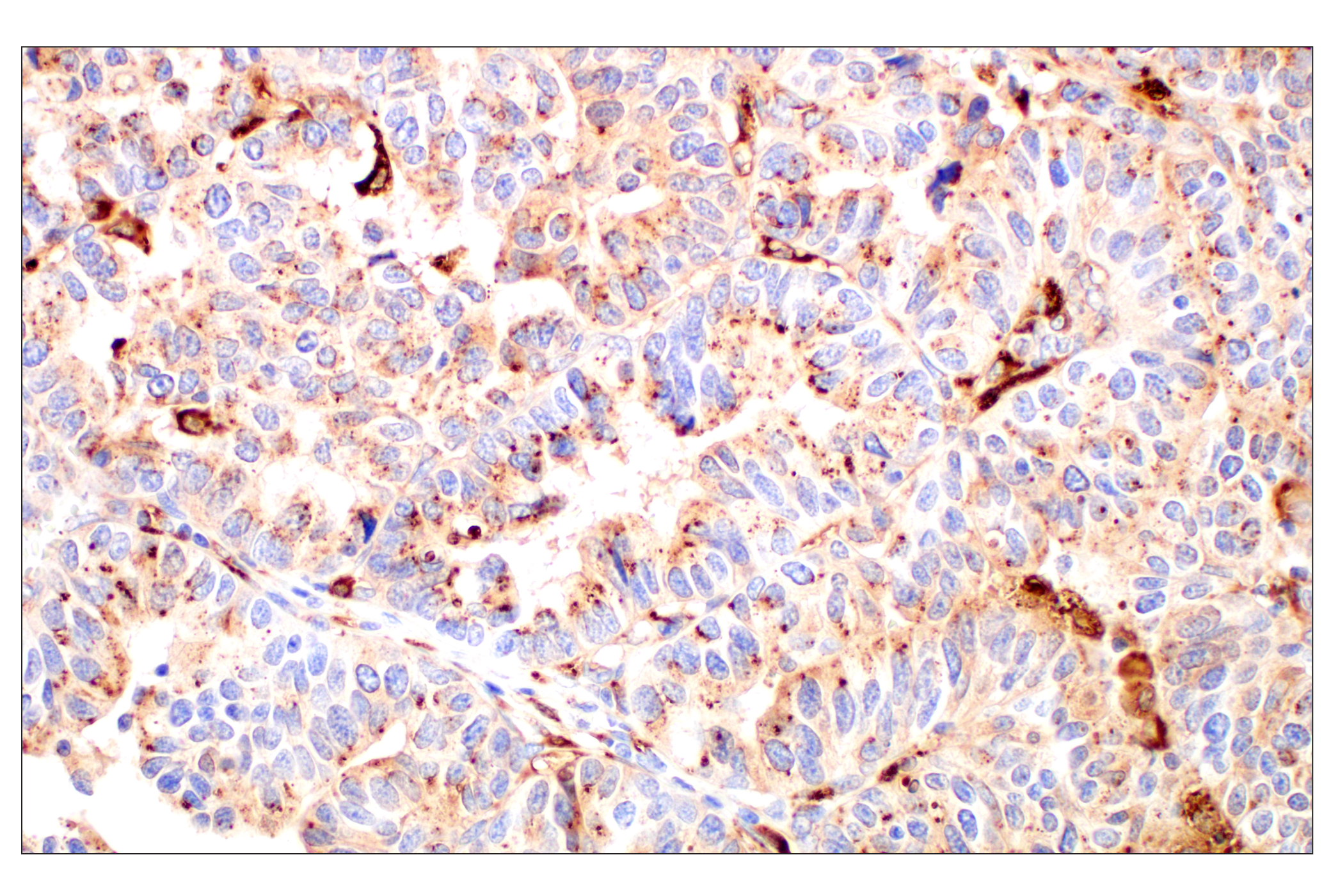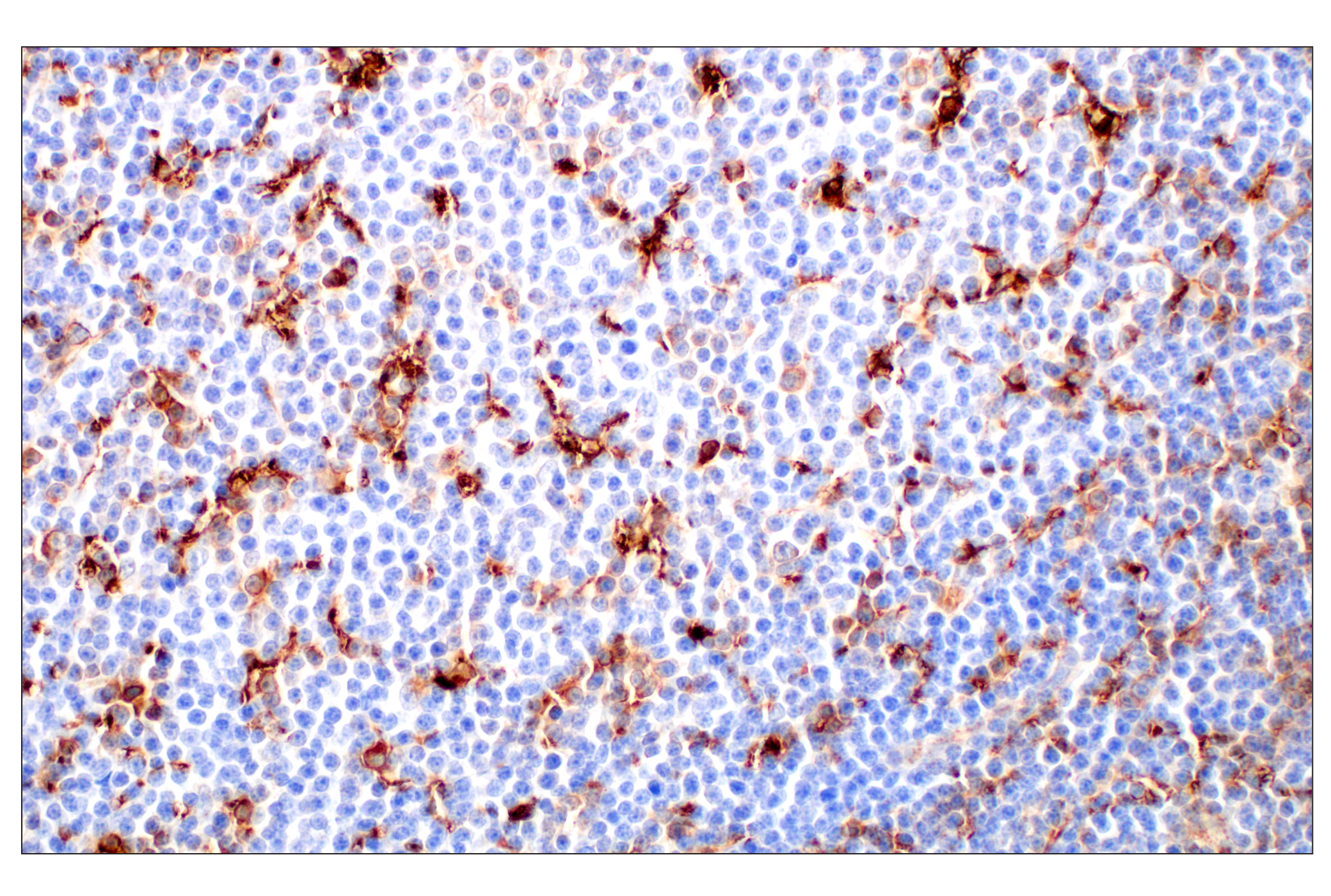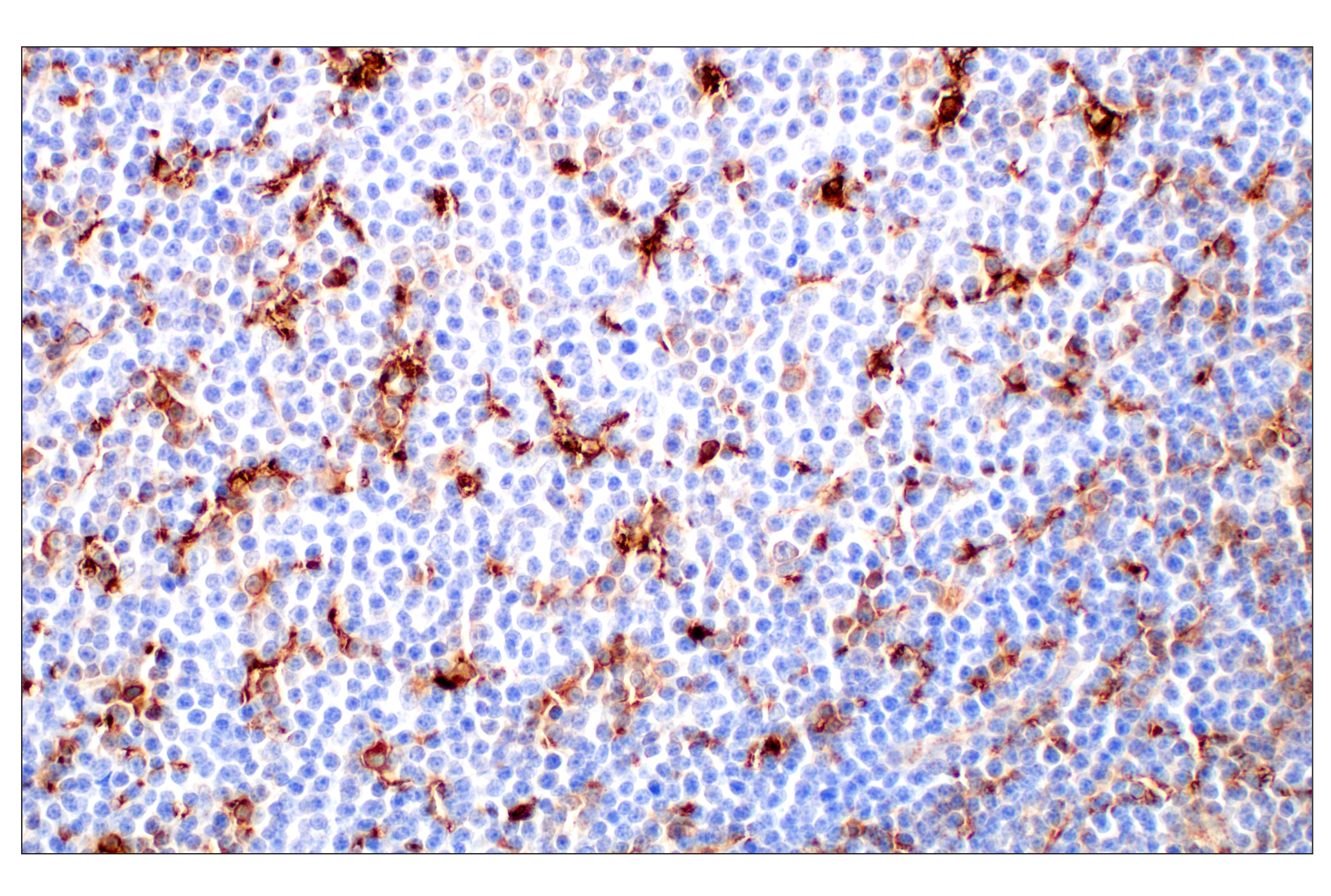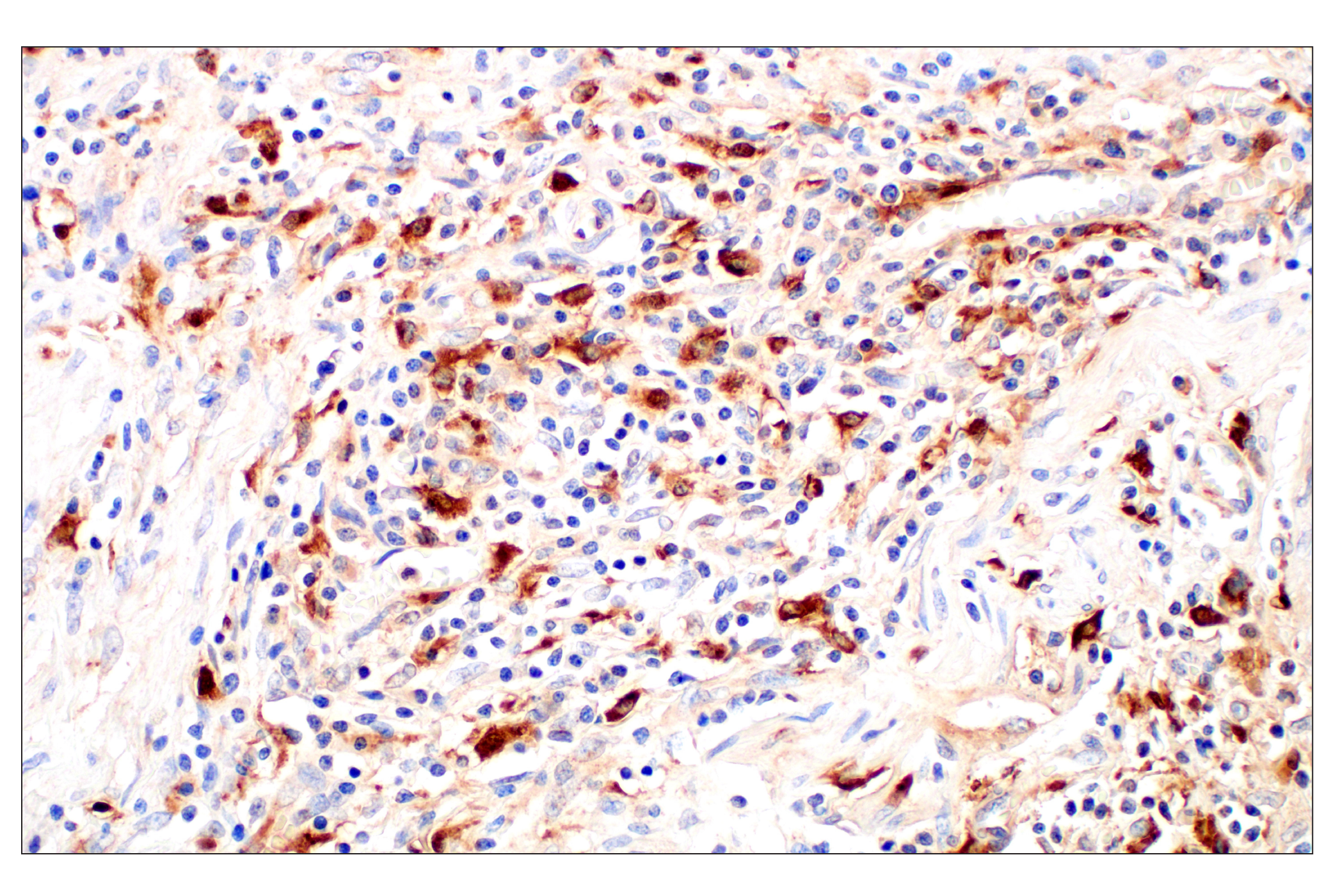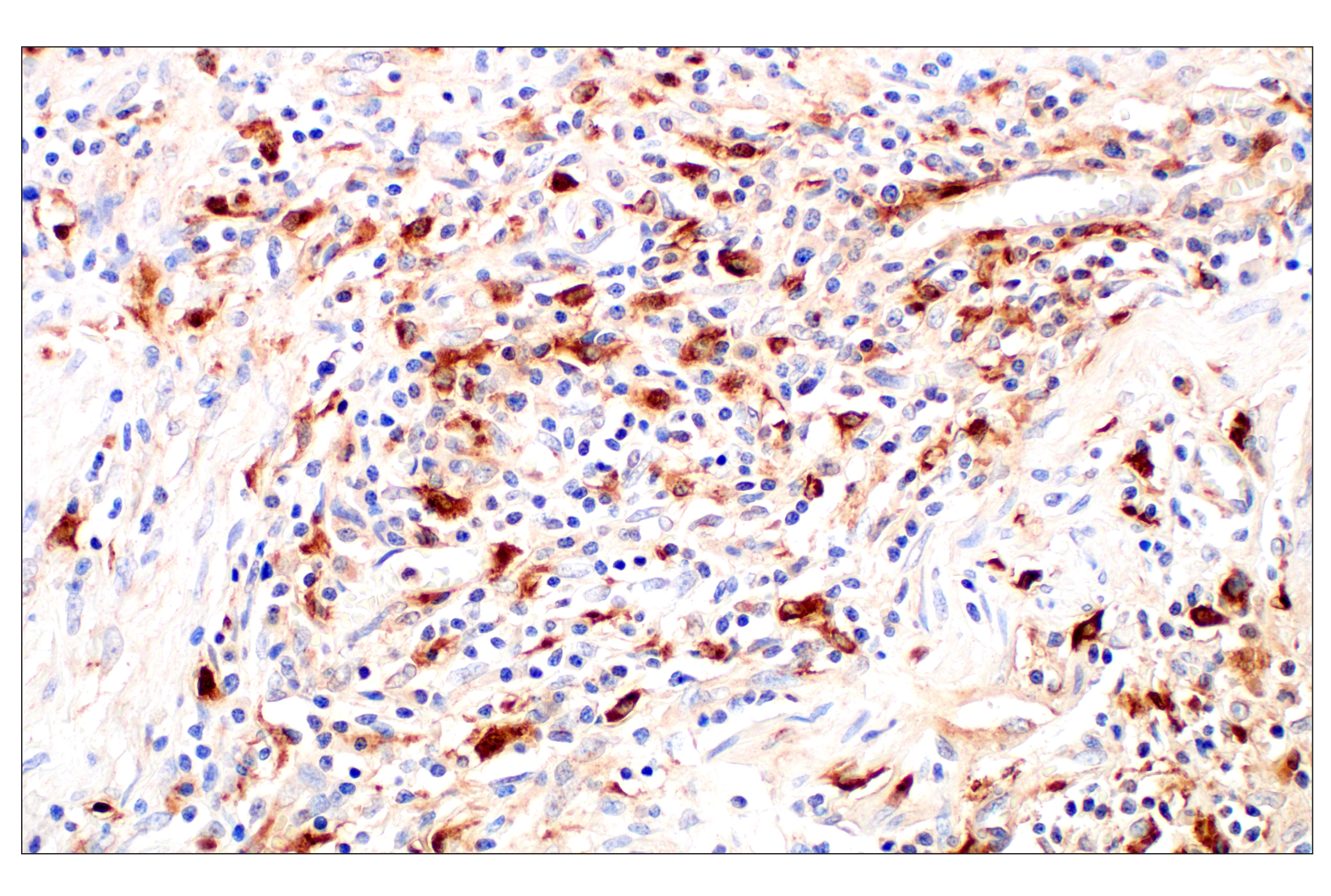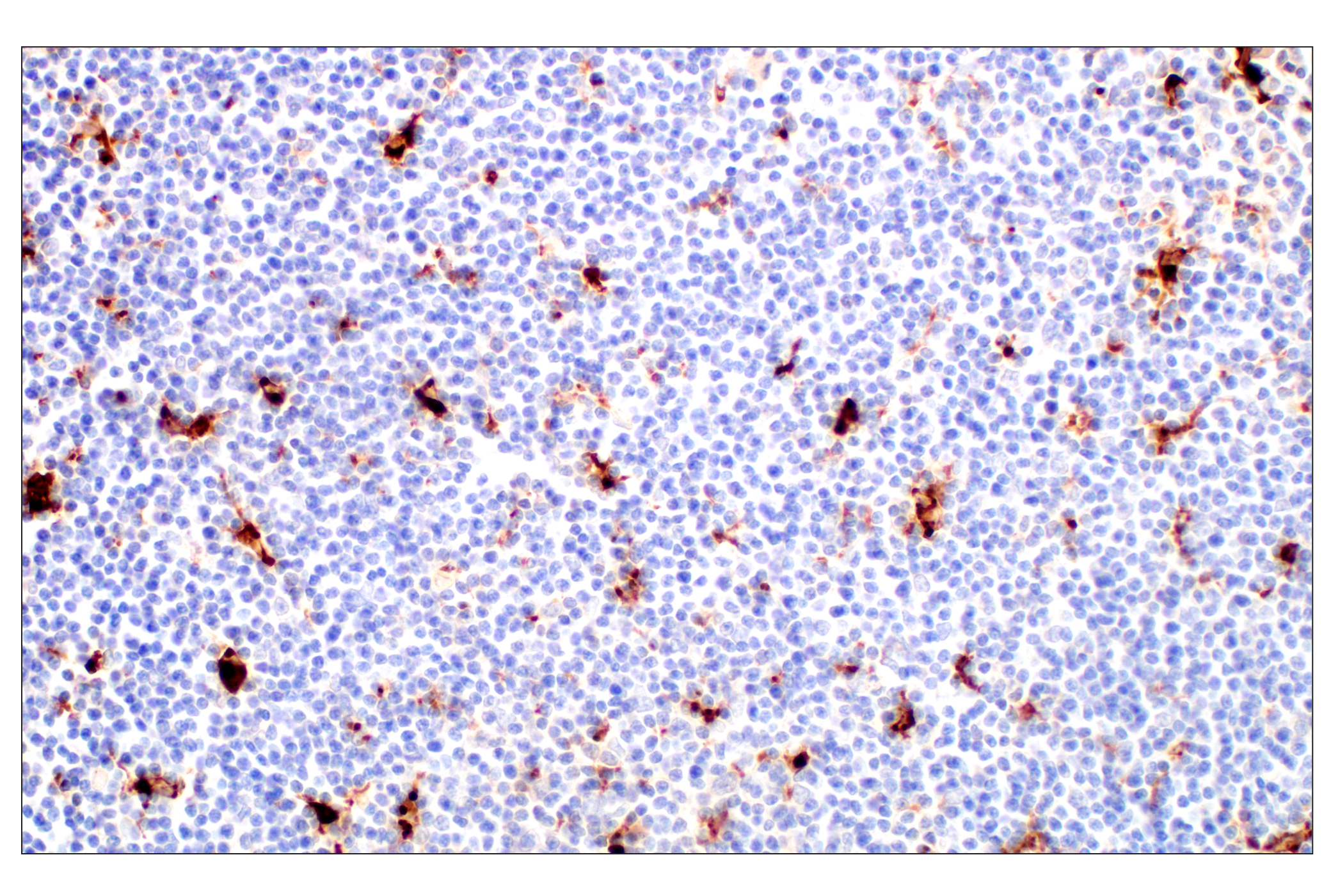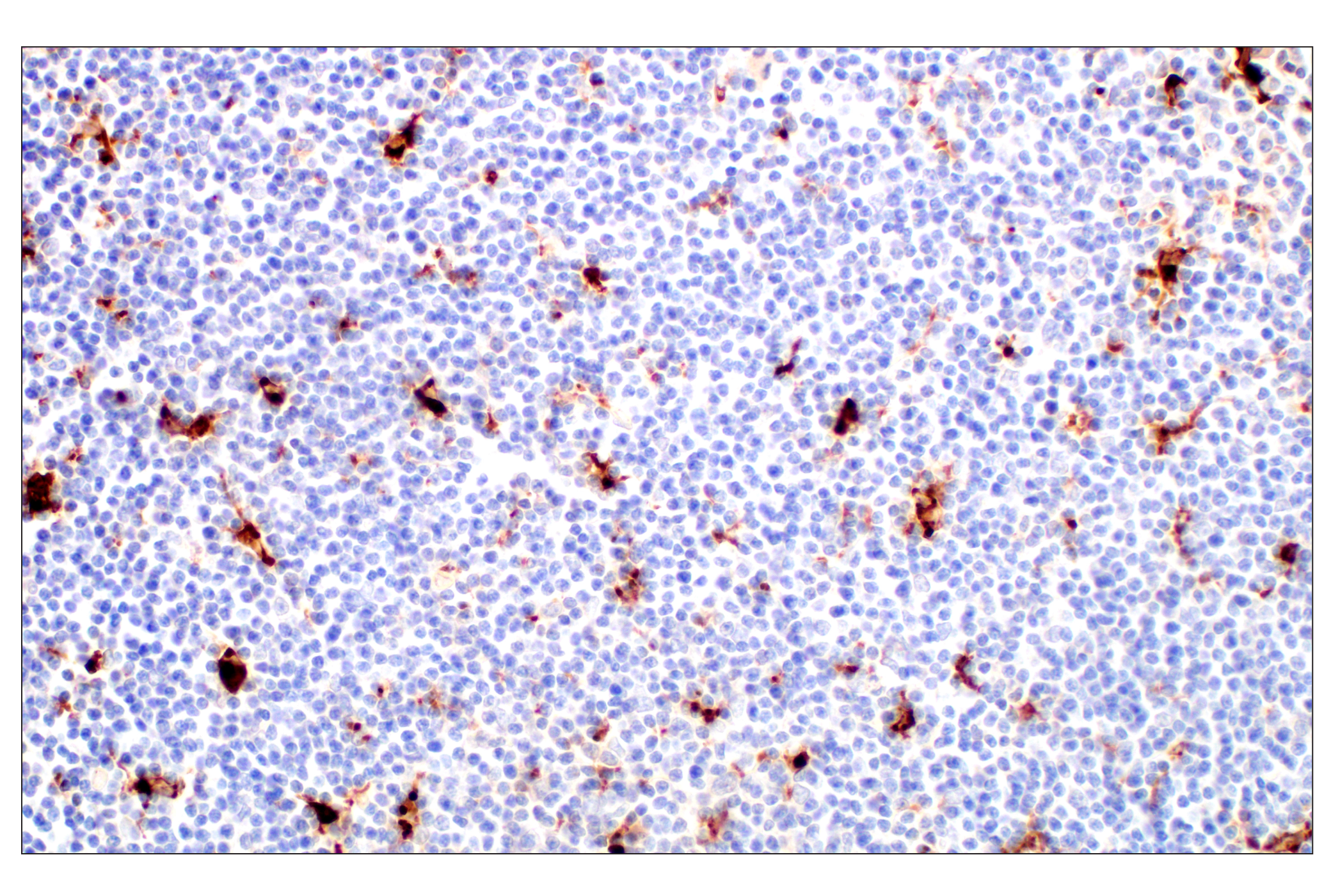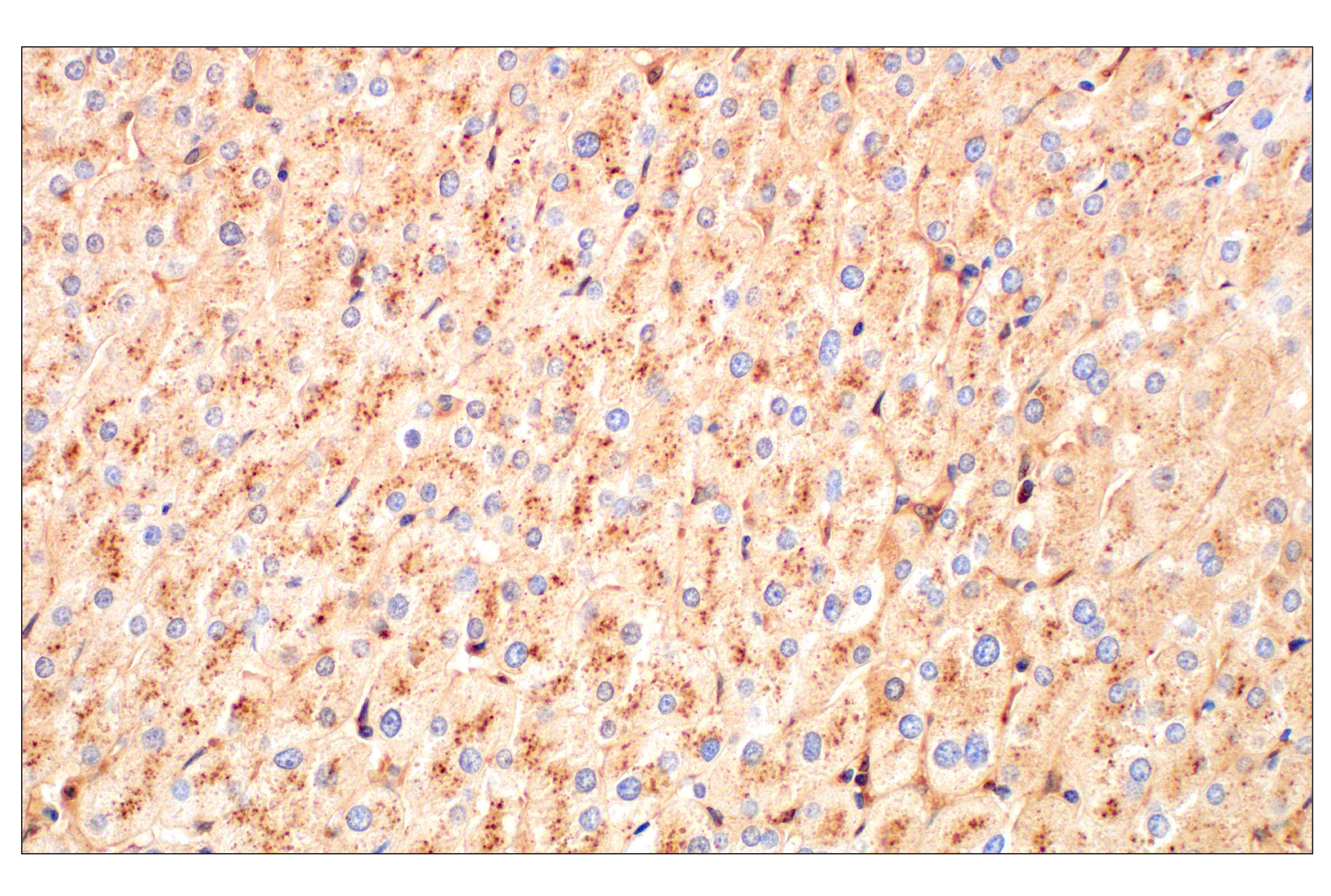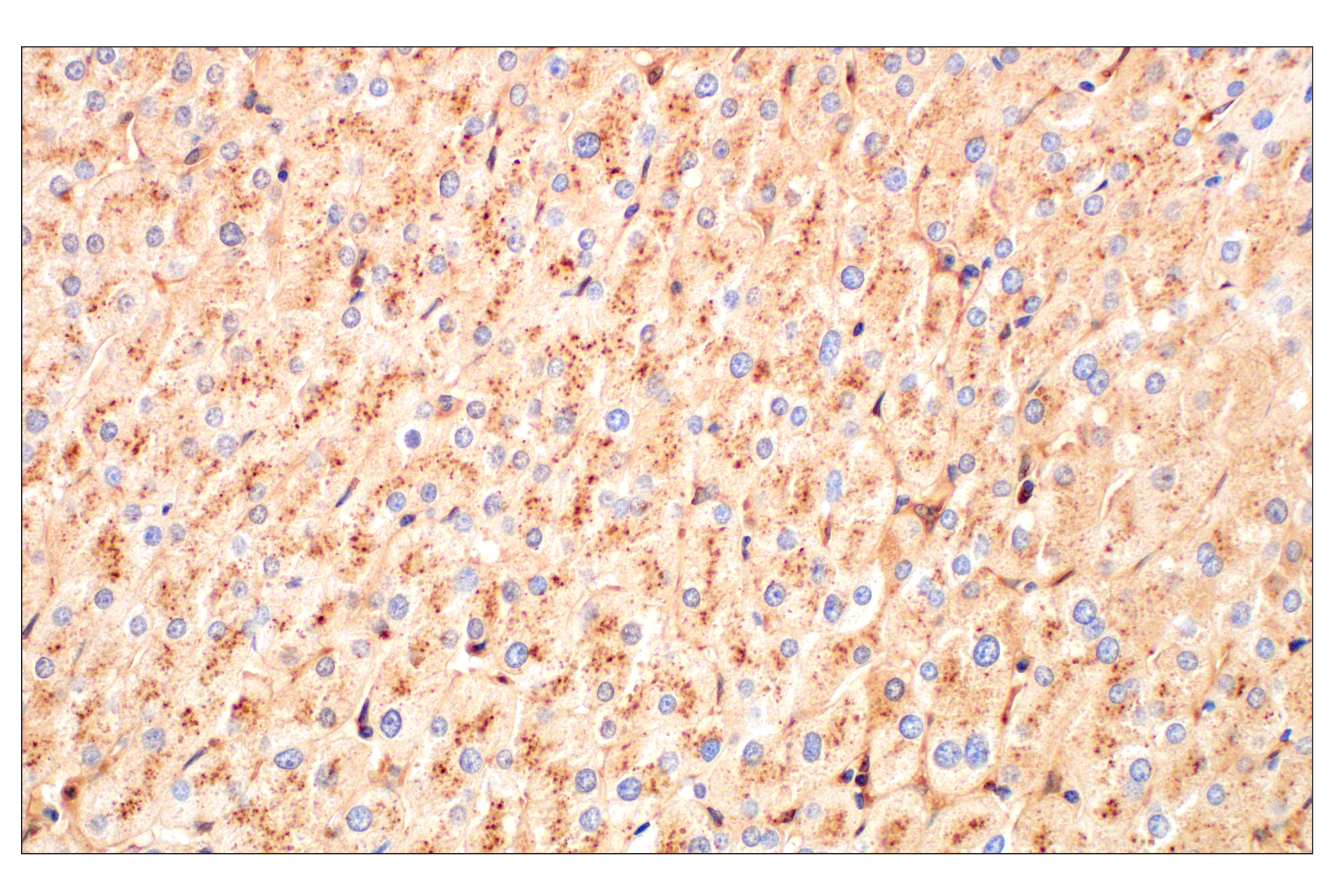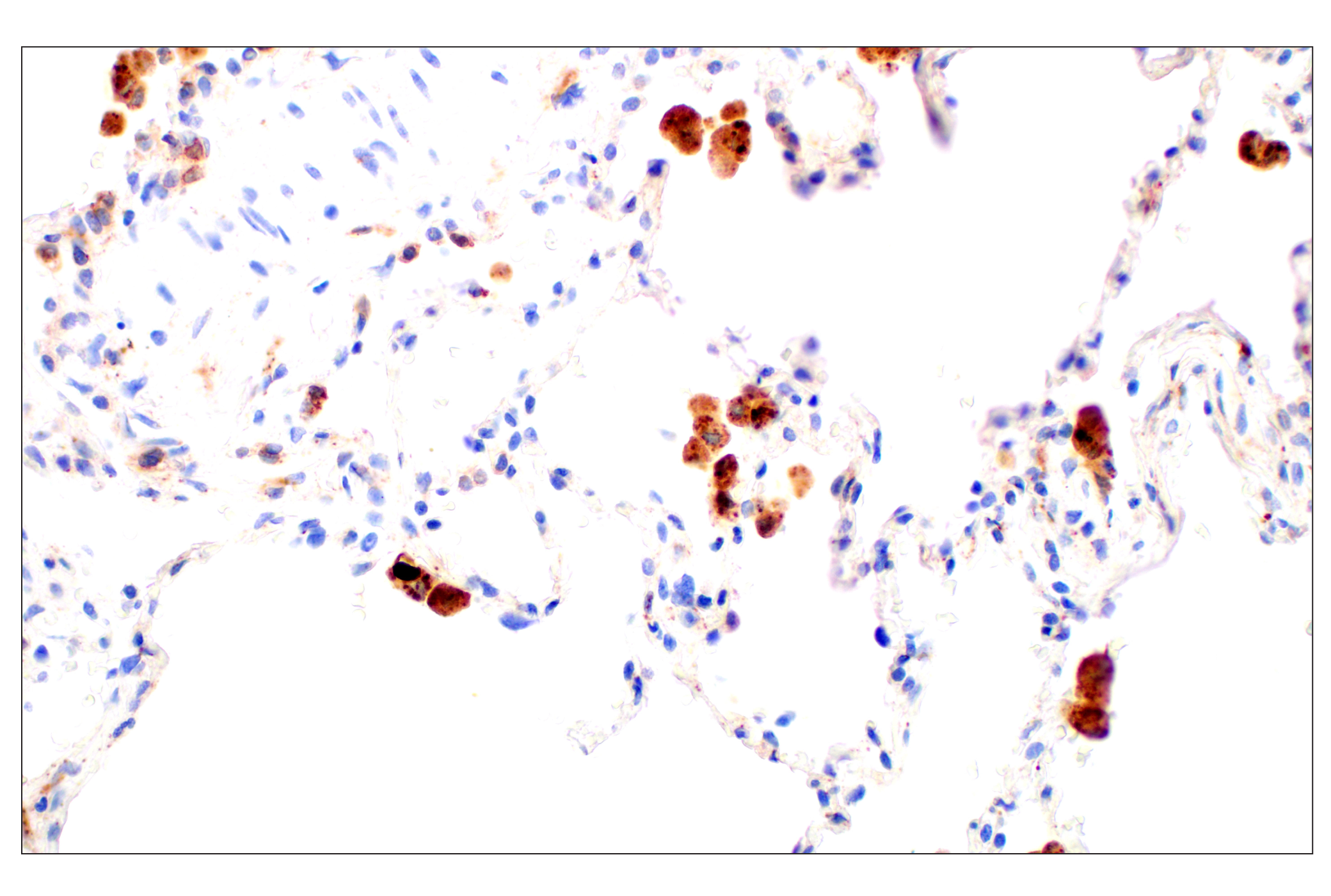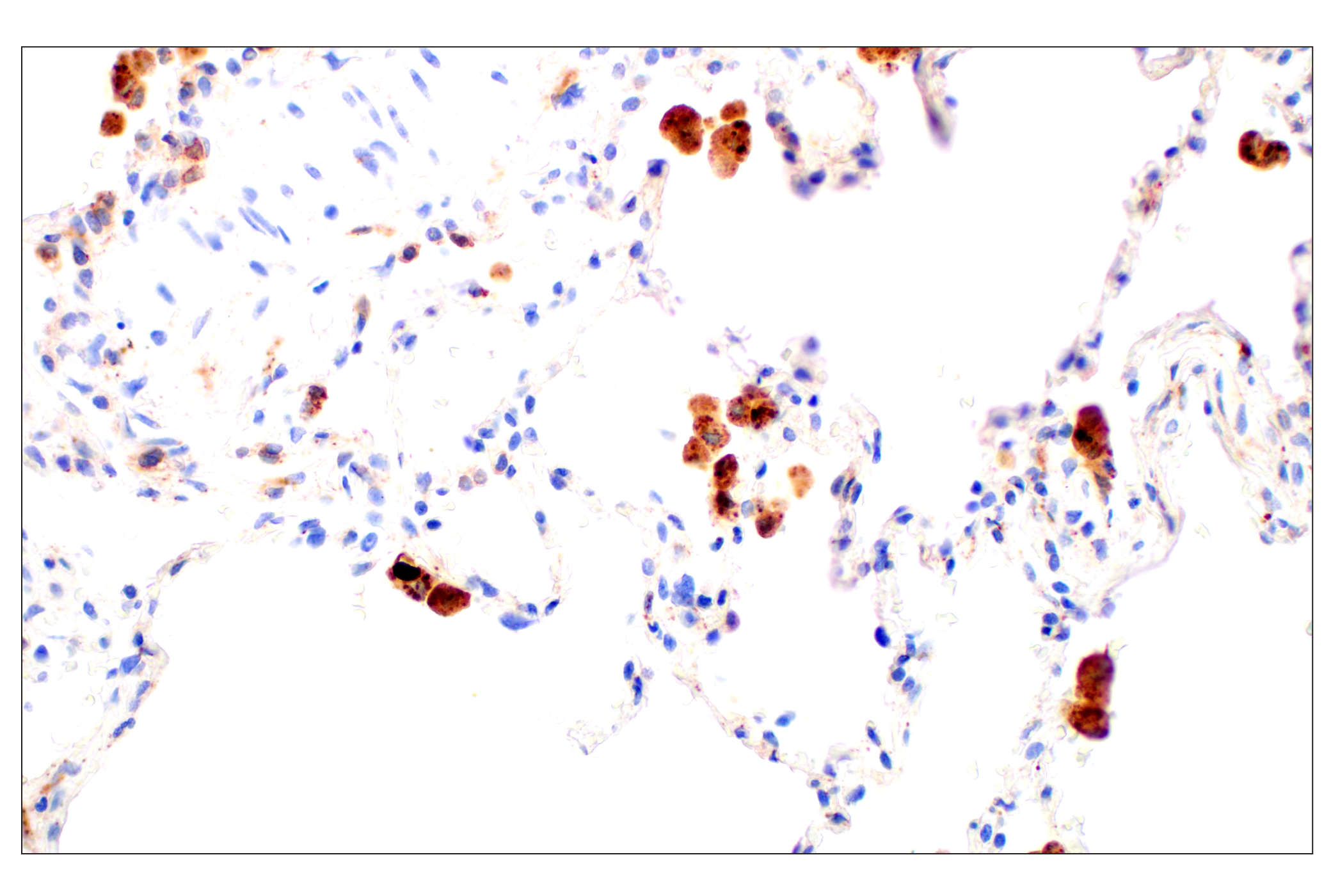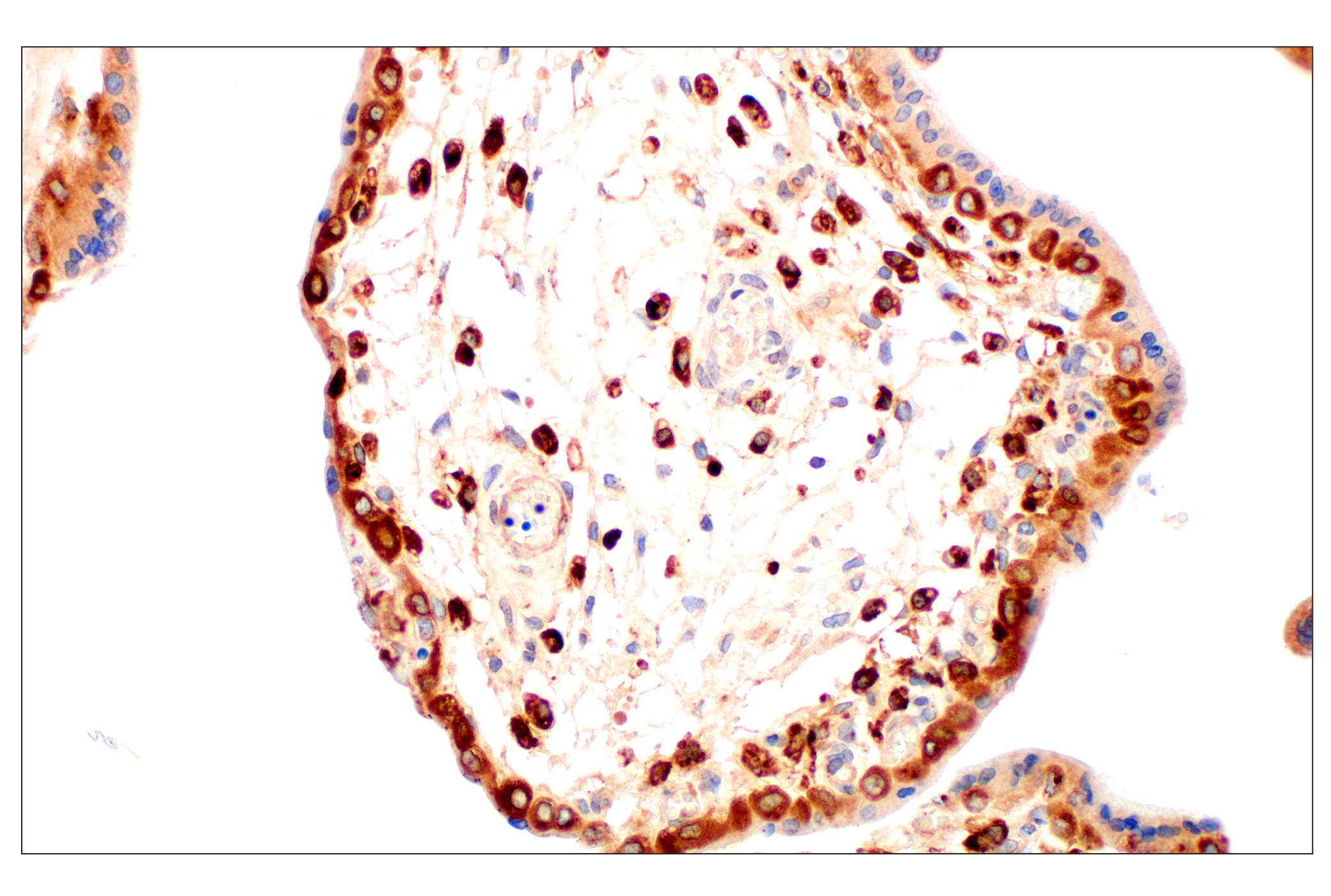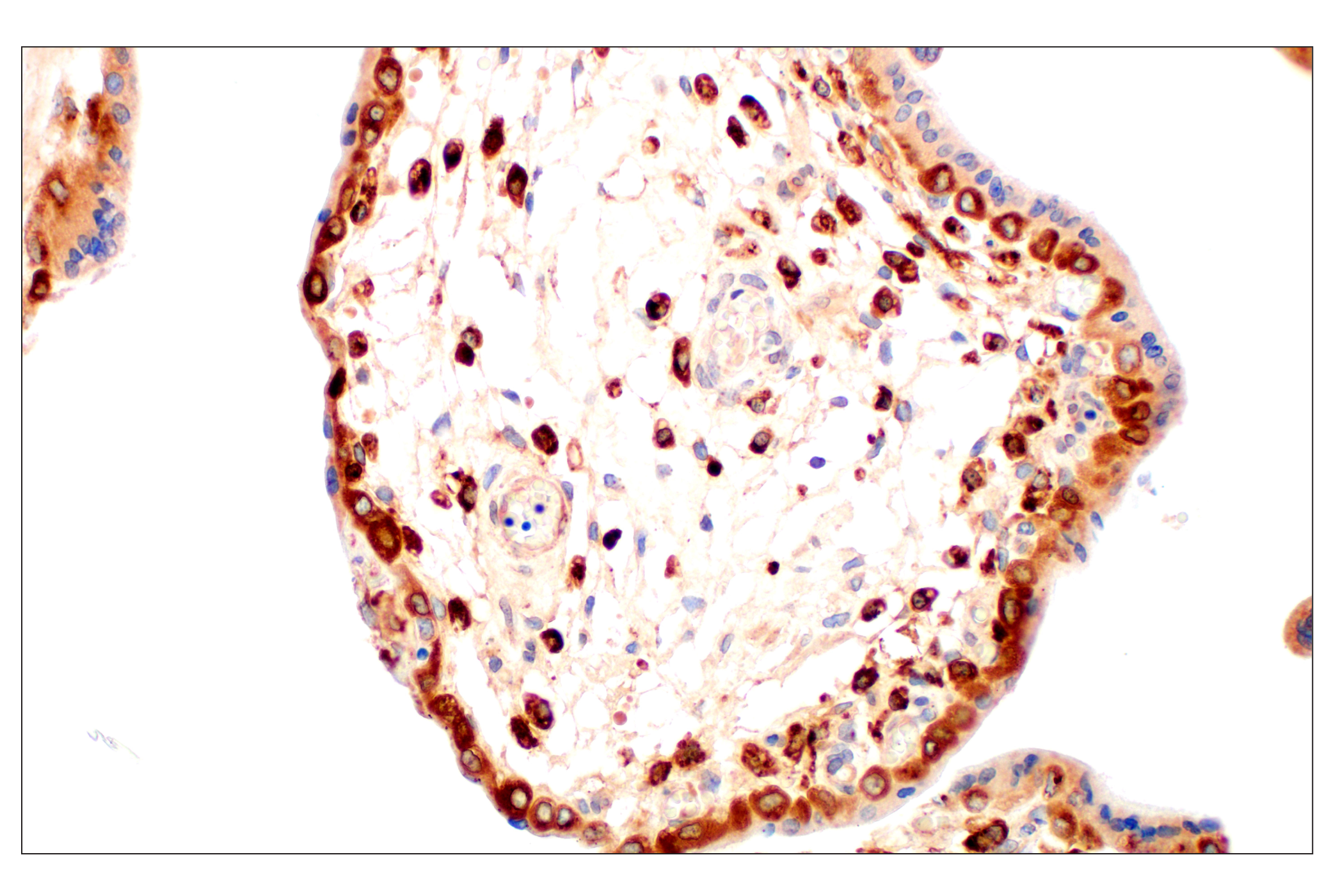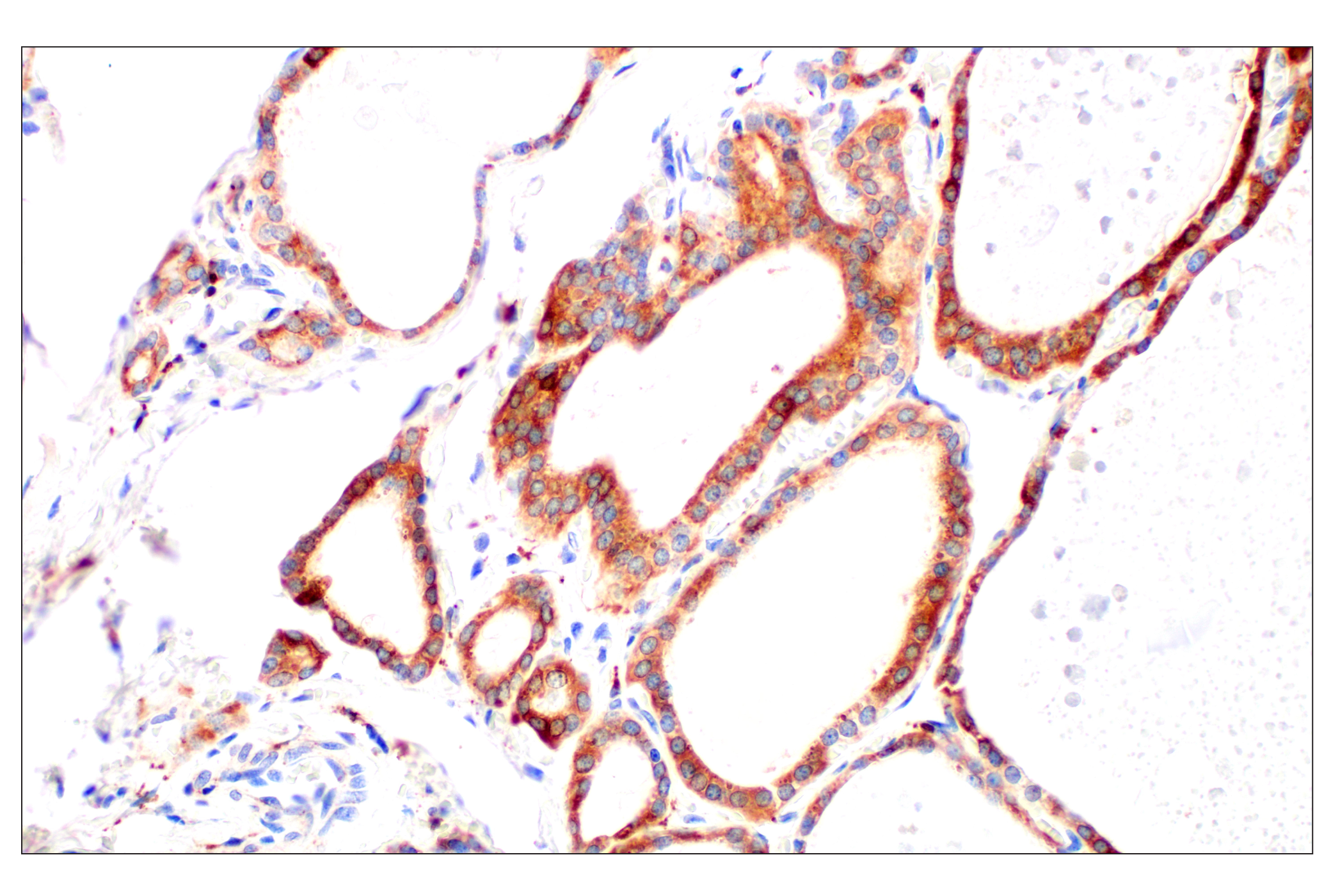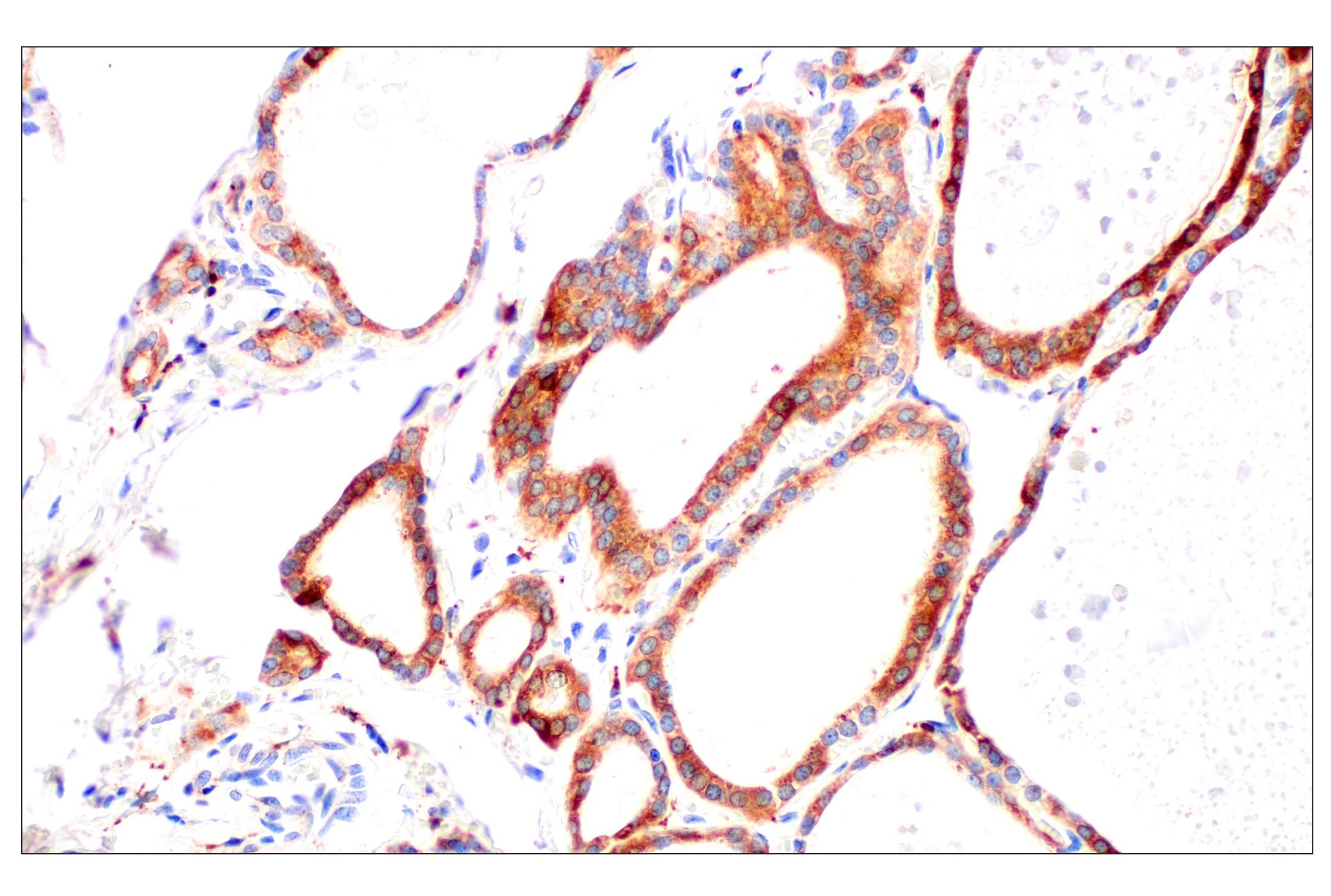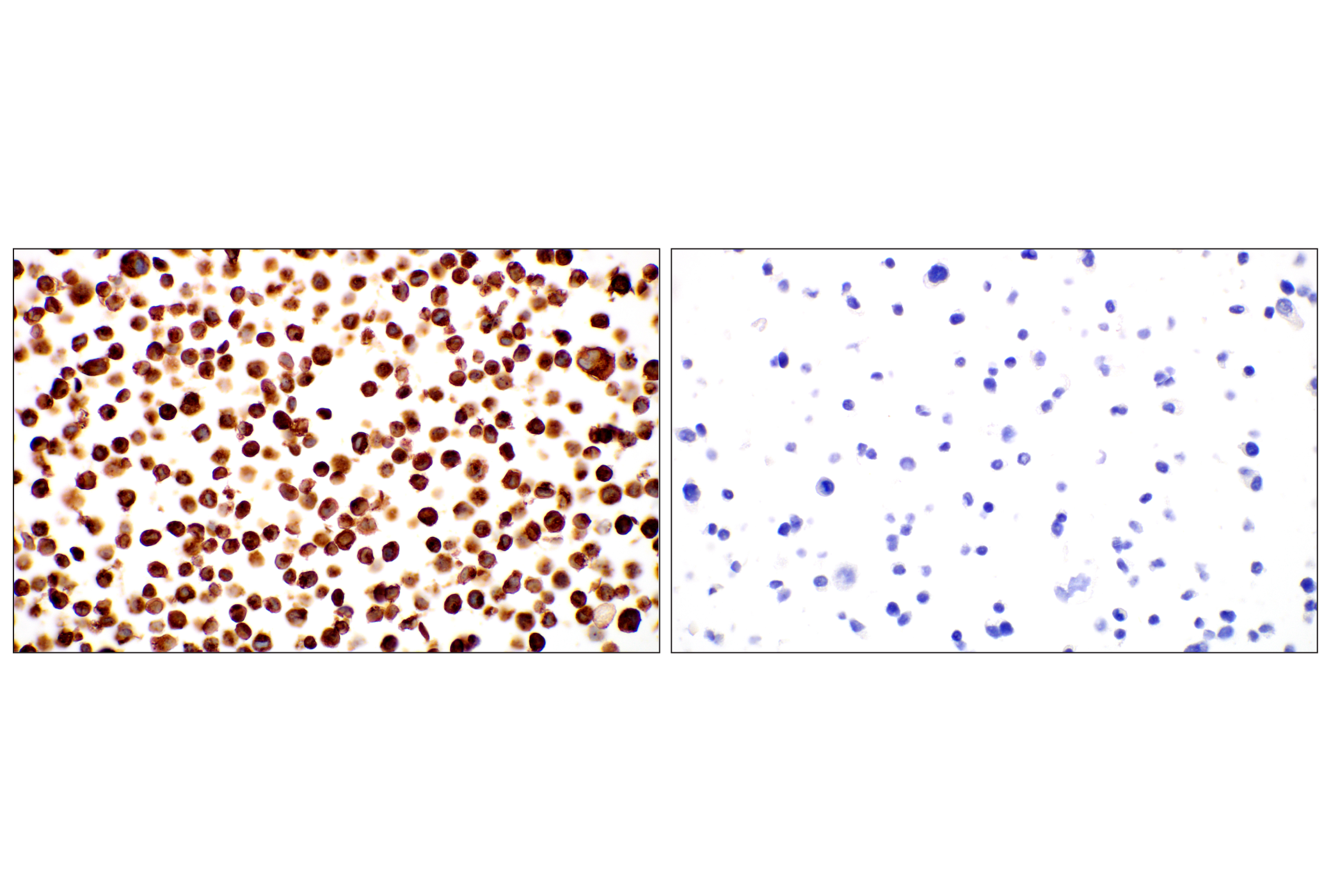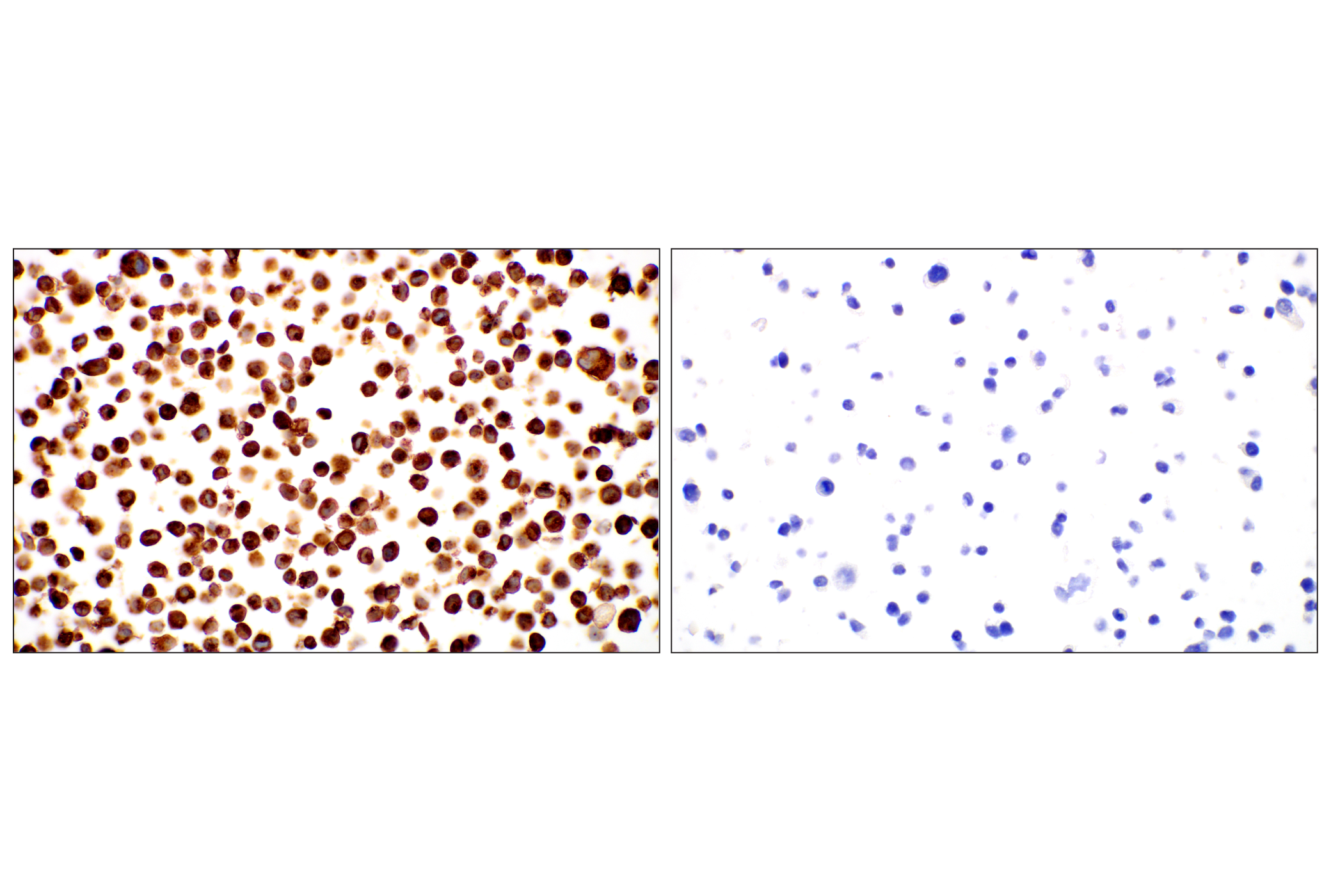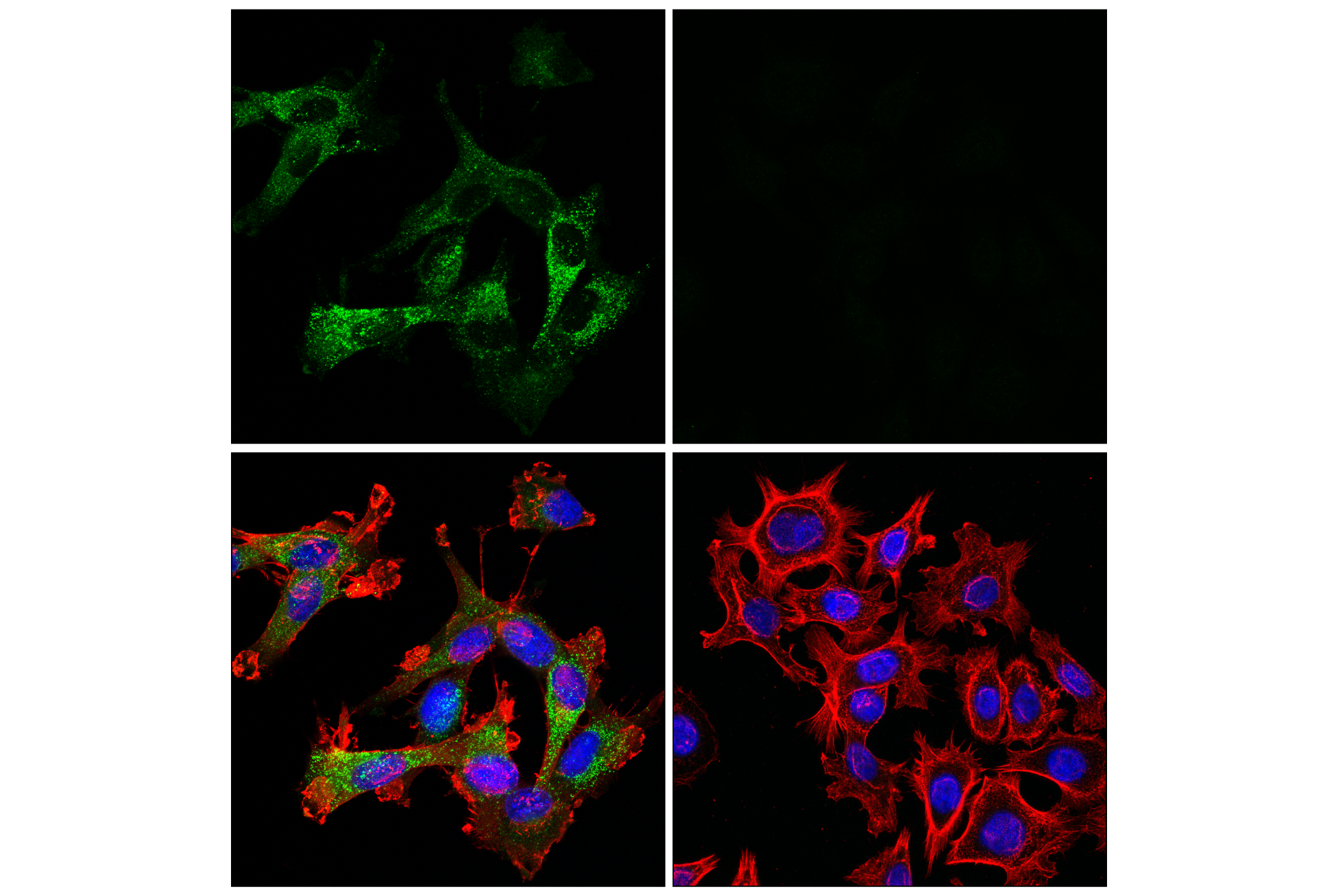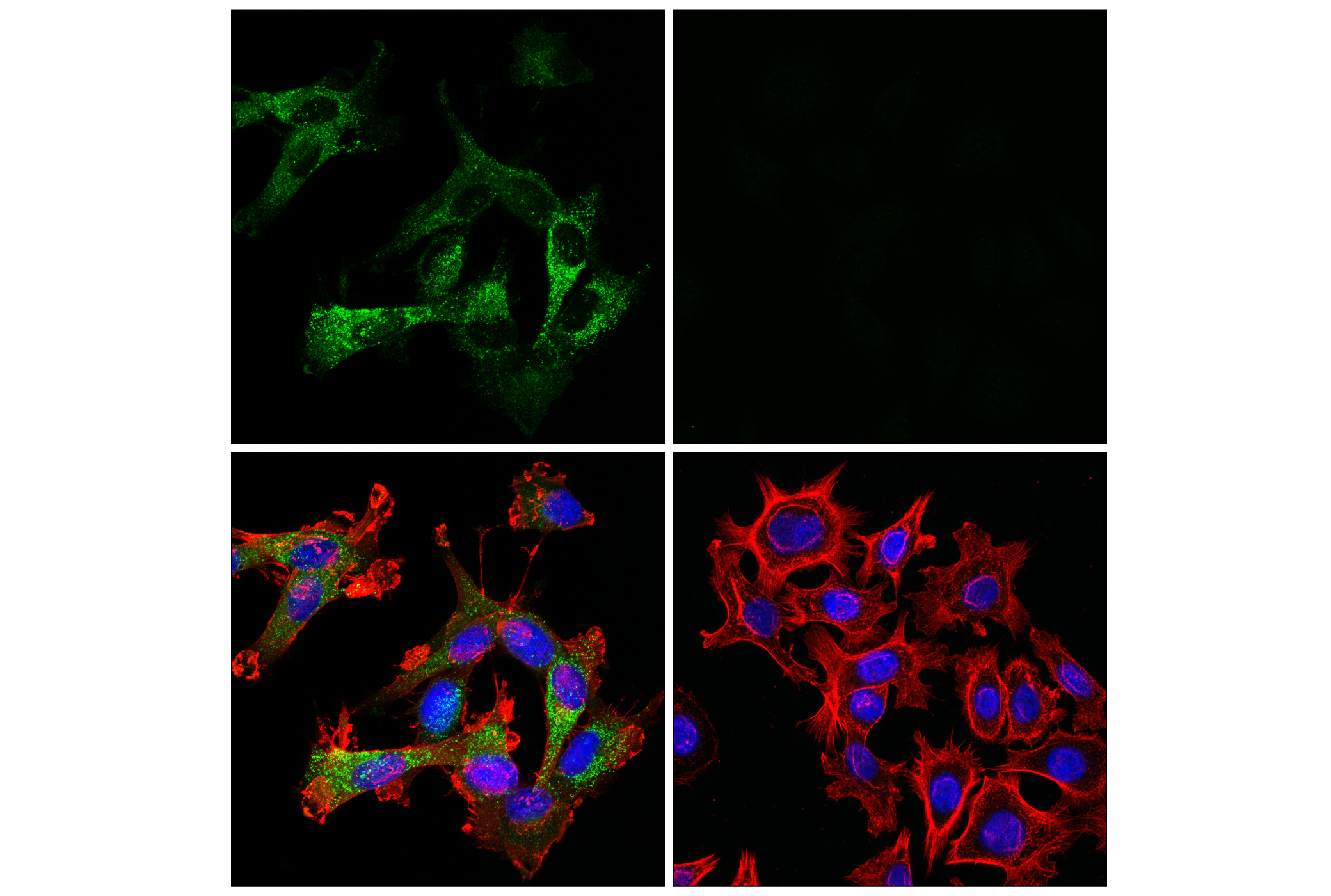WB, IHC-P, IF-IC
H Mk
Endogenous
25-42
Rabbit IgG
#P07711
1514
Product Information
Product Usage Information
| Application | Dilution |
|---|---|
| Western Blotting | 1:1000 |
| Immunohistochemistry (Paraffin) | 1:500 - 1:2000 |
| Immunofluorescence (Immunocytochemistry) | 1:50 - 1:200 |
Storage
For a carrier free (BSA and azide free) version of this product see product #74355.
Specificity / Sensitivity
Species Reactivity:
Human, Monkey
Source / Purification
Monoclonal antibody is produced by immunizing animals with recombinant protein corresponding to a fragment of human cathepsin L protein spanning residues Ala114 to Thr288.
Background
Cathepsin L belongs to the C1 family of peptidases, a large and diverse family of cysteine (thiol) proteases that play fundamental roles in protein processing and degradation. The catalytic activity of C1 peptidases maps to a nucleophilic cysteine thiol, usually found within a catalytic dyad or triad (1). Cathepsin L, initially synthesized as procathepsin L before undergoing proteolytic cleavage to its active form, is a ubiquitously expressed thiol protease, expressed primarily in lysosomes but which is also secreted by some cell types. Its diverse functions include general protein catabolism and autophagy (2), antigen processing (3), promoting angiogenesis (4), and extracellular matrix degradation (5,6). An isoform of cathepsin L has also been reported in the nucleus, where it was shown to be involved in the regulation of transcription factor activity (7). Targeted deletion of the Ctsl gene in mice embryos was non-lethal, but resulted in periodic hair loss and skin defects, including epidermal hyperplasia, acanthosis, and hyperkeratosis (8). More recently, research studies have reported that cathepsin L is involved in viral protein processing during viral replication, and that cathepsin L inhibitors may have utility in combating infection by SARS-CoV-2 and related coronaviruses (9).
- Rawlings, N.D. et al. (2018) Nucleic Acids Res 46, D624-D632.
- Kaminskyy, V. and Zhivotovsky, B. (2012) Biochim Biophys Acta 1824, 44-50.
- Nakagawa, T. et al. (1998) Science 280, 450-3.
- Pan, T. et al. (2020) Gastric Cancer 23, 974-987.
- Dykes, S.S. et al. (2019) Oncotarget 10, 5560-5568.
- Felbor, U. et al. (2000) EMBO J 19, 1187-94.
- Burton, L.J. et al. (2017) Mol Cell Biol 37, e00297-16. doi: 10.1128/MCB.00297-16.
- Roth, W. et al. (2000) FASEB J 14, 2075-86.
- Zhao, M.M. et al. (2021) Signal Transduct Target Ther 6, 134.
Species Reactivity
Species reactivity is determined by testing in at least one approved application (e.g., western blot).
Western Blot Buffer
IMPORTANT: For western blots, incubate membrane with diluted primary antibody in 5% w/v BSA, 1X TBS, 0.1% Tween® 20 at 4°C with gentle shaking, overnight.
Applications Key
WB: Western Blotting IHC-P: Immunohistochemistry (Paraffin) IF-IC: Immunofluorescence (Immunocytochemistry)
Cross-Reactivity Key
H: human M: mouse R: rat Hm: hamster Mk: monkey Vir: virus Mi: mink C: chicken Dm: D. melanogaster X: Xenopus Z: zebrafish B: bovine Dg: dog Pg: pig Sc: S. cerevisiae Ce: C. elegans Hr: horse GP: Guinea Pig Rab: rabbit All: all species expected
Trademarks and Patents
Limited Uses
Except as otherwise expressly agreed in a writing signed by a legally authorized representative of CST, the following terms apply to Products provided by CST, its affiliates or its distributors. Any Customer's terms and conditions that are in addition to, or different from, those contained herein, unless separately accepted in writing by a legally authorized representative of CST, are rejected and are of no force or effect.
Products are labeled with For Research Use Only or a similar labeling statement and have not been approved, cleared, or licensed by the FDA or other regulatory foreign or domestic entity, for any purpose. Customer shall not use any Product for any diagnostic or therapeutic purpose, or otherwise in any manner that conflicts with its labeling statement. Products sold or licensed by CST are provided for Customer as the end-user and solely for research and development uses. Any use of Product for diagnostic, prophylactic or therapeutic purposes, or any purchase of Product for resale (alone or as a component) or other commercial purpose, requires a separate license from CST. Customer shall (a) not sell, license, loan, donate or otherwise transfer or make available any Product to any third party, whether alone or in combination with other materials, or use the Products to manufacture any commercial products, (b) not copy, modify, reverse engineer, decompile, disassemble or otherwise attempt to discover the underlying structure or technology of the Products, or use the Products for the purpose of developing any products or services that would compete with CST products or services, (c) not alter or remove from the Products any trademarks, trade names, logos, patent or copyright notices or markings, (d) use the Products solely in accordance with CST Product Terms of Sale and any applicable documentation, and (e) comply with any license, terms of service or similar agreement with respect to any third party products or services used by Customer in connection with the Products.
